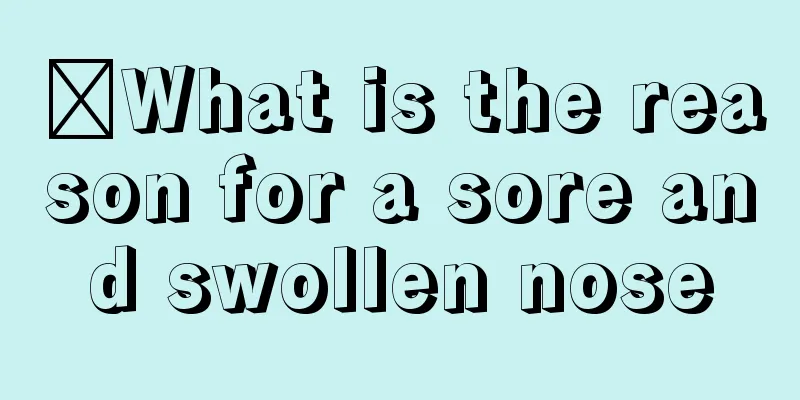What are the symptoms of hip synovitis

|
Hip synovitis is a type of bone disease, which is generally common in children. Little boys between three and six years old are most likely to develop this disease. There are no special signs before the onset of this disease, and patients with this disease usually develop the disease suddenly. The disease has a great impact on walking. It is mainly believed that this disease is caused by external injuries and bacterial infections. The following mainly introduces its symptoms. [Typical symptoms] Unilateral hip or groin pain is the most common clinical symptom, and some patients may experience pain in the mid-thigh or knee. In very young children, symptoms may include night crying, and careful examination may reveal painful claudication. [Other symptoms] Children with hip synovitis usually do not have fever or have a mild fever. High fever is very rare. [Diagnosis basis] Hip synovitis usually affects one side of the joint, but occasionally affects both sides. Some patients have a history of trauma or an upper respiratory tract infection or trauma within 2 to 3 weeks; symptoms vary in severity, mainly pain and limited movement, and in severe cases, hip swelling and lameness may occur; physical examination may show tenderness in the anterior and posterior sides of the hip joint, limited passive movement, especially in internal rotation, abduction, and extension; the "4" test is positive, and some patients have a pelvic tilt toward the affected side. Laboratory examinations showed an increase in white blood cell count and a slightly accelerated erythrocyte sedimentation rate. The anti-"O" antibody test, tuberculin test, and rheumatoid factor test were all negative. The bacterial culture of the joint fluid puncture was negative. The synovial pathological section showed nonspecific inflammation. The main X-ray manifestations are no bone structural abnormalities in the hip joint, and sometimes a bulging shadow of the joint capsule and a widened joint space can be seen. Ultrasound diagnosis is also an important basis for examining this disease. Treatment strategy Conservative treatments such as manipulation, traction, and physical therapy are given, and surgical treatment is offered if ineffective. [Drug treatment] Nonsteroidal anti-inflammatory drugs can shorten the duration of symptoms. [Surgical treatment] When conservative treatment is ineffective, surgery can be performed promptly to remove the synovium embedded in the joint to avoid delaying the disease. [Other treatments] 1. Manual therapy is suitable for patients with severe hip pain and hip synovial incarceration. 2. Traction therapy is suitable for all children. The patient lies on his back with the affected limb abducted 30° in a neutral position. Continuous horizontal skin traction is performed on the affected limb. The traction weight generally does not exceed 5kg, and the traction time is 7 to 10 days. While traction is in progress, the patient is advised to do static contraction exercises of the quadriceps femoris to prevent muscle atrophy. [Prognosis] Most cases resolve with treatment and rest. Daily care 1. Rest in bed and do flexion and extension exercises of the hip and knee joints. 2. Avoid strenuous activities such as walking, weight-bearing, and jumping too early. 3. Massage the pressure points on bony prominences regularly to prevent pressure sores. 4. Perform limb and joint function exercises as prescribed by your doctor. 5. Have regular check-ups and seek medical attention promptly if you feel unwell. [Dietary adjustment] Give a light, nutritious and easily digestible diet, make sure to drink plenty of water, eat more fresh fruits and vegetables, and avoid spicy and irritating foods. |
<<: Why do my finger joints become stiff when I wake up?
>>: The correct method and steps to take body temperature
Recommend
Does the treatment of nodular thyroid cysts require surgical treatment?
Nodular goiter is a disease that poses a particul...
What to do if the lid of the water cup cannot be unscrewed
Everyone should have a water cup. We can use it t...
Does drinking make you fat
In life, many people prefer to drink alcohol, bec...
7 symptoms to tell whether white-collar workers are sub-healthy
Often staying up late to work overtime, not eatin...
The benefits of drinking Cordyceps soaked in water
When it comes to Cordyceps sinensis, everyone may...
What kind of tea can warm the stomach?
The effects and functions of tea can be said to b...
Can fish maw enlarge breasts? You will know after reading the following
Fish maw is fish maw, a dried product of various ...
What are the specific manifestations of advanced prostate cancer
Everyone should be familiar with prostate cancer....
Can I have sex in the second month of pregnancy?
During the first three months of pregnancy, women...
How to relieve pain in late stage nasopharyngeal carcinoma
Many cancers will have symptoms of pain in the la...
How to treat headache symptoms caused by nasopharyngeal carcinoma
What are the symptoms of headaches caused by canc...
Is black bean hair dye effective?
Some people will feel that they have grown a lot ...
Can rhinitis caused by lung cancer be cured?
Can rhinitis caused by lung cancer be cured? Rhin...
What are the early symptoms of brain cancer
Some brain cancer patients may also experience he...
There is a tumor on the stomach
There are many people who often do not eat on tim...









